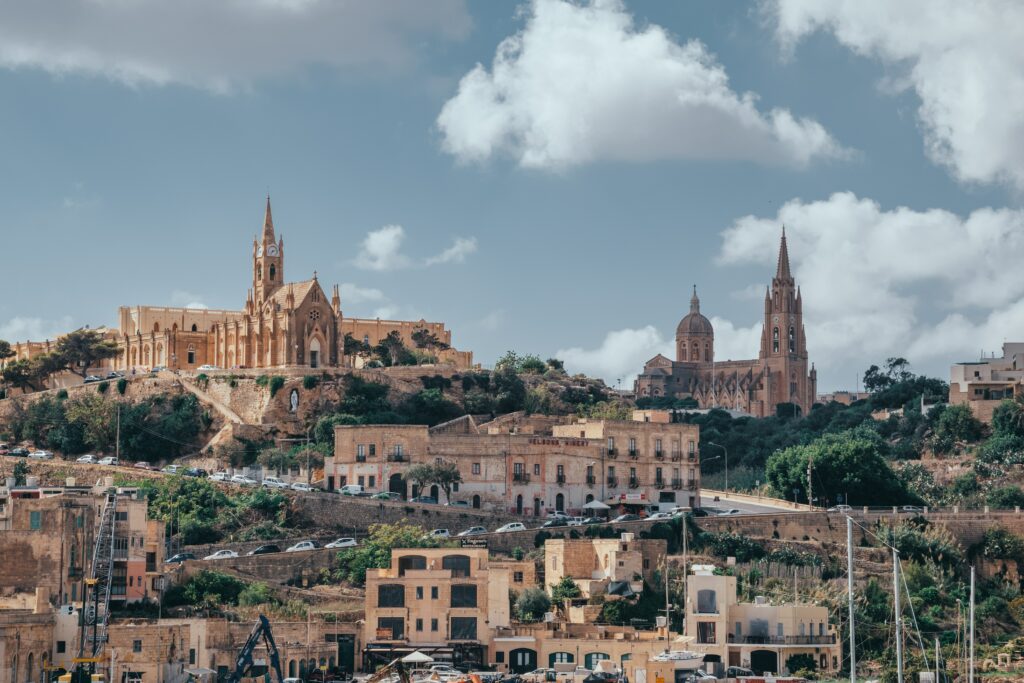St. John’s Co-Cathedral: Discover A Baroque Masterpiece
Malta is renowned for its stunning architecture, with St. John’s Co-Cathedral being a prime example of the island’s unmatched beauty. The cathedral’s unique Baroque style, coupled with its historical significance, make it a must-see destination for anyone visiting Malta.
Table of contents
- St. John's Co-Cathedral: Discover A Baroque Masterpiece
- St. John's Co-Cathedral: A Brief History
- The Exterior of St. John's Co-Cathedral
- The Interior of St. John's Co-Cathedral
- The Experience of Visiting St. John's Co-Cathedral
- St. John's Co-Cathedral and the Knights of St. John
- The Legacy of St. John's Co-Cathedral
The Cathedral is one of the most impressive landmarks in Malta, showcasing the true beauty of Baroque architecture. The cathedral was built as the Church of St. John in the 16th century and later transformed into a co-cathedral during the Knights of St. John era. Today, it stands as a testament to Malta’s rich cultural heritage and serves as an inspiration to artists and architects around the world.
Join us as we explore the wonder that is St. John’s Co-Cathedral and discover why it is considered one of the most important historical and cultural landmarks of Malta.
St. John’s Co-Cathedral: A Brief History
St. John’s Co-Cathedral is one of Malta’s most prominent landmarks, located in the heart of Valletta. Originally built as the Church of St. John in the late 16th century, it was elevated to co-cathedral status in 1816.
The cathedral’s origins can be traced back to the Knights of St. John belonged to a military order that was in Malta from 1530 to 1798. The knights had a big part in creating and decorating the cathedral. Many of the order’s members were buried there. Explanation: The original sentence is quite complex and contains additional information.
Throughout its history, the Cathedral has been the site of many significant events. In 1565, the knights defended Malta from the Ottomans. The cathedral served as a hospital, and the fallen knights were buried there.
St. John’s Co-Cathedral and the Knights of St. John
Knights of St John’s influence on St John’s Co-Cathedral can be seen throughout the design and decoration of the building. Those knights were known for their opulence and love of art, which is reflected in the cathedral’s richly decorated interior.
The cathedral has detailed carvings and paintings on its walls. These artworks show scenes from the life of Saint John the Baptist, the patron saint of the order. One famous artwork in the cathedral is Caravaggio’s “The Beheading of Saint John the Baptist,” found in the oratory.
St. John’s Co-Cathedral has several tombs and chapels. Many of these are dedicated to members of the Knights of St. John. There are two chapels, the Chapel of the Langue of Italy and the Chapel of the Langue of France. Both chapels have beautiful sculptures and frescoes.
The Exterior of St. John’s Co-Cathedral
Located in the heart of Valletta, the Co-Cathedral is a prime example of Baroque architecture in Malta. With its distinctive style and intricate design, the cathedral is a sight to behold from the outside as well as the inside.
Situated in St. John’s Square has a beautiful cathedral. The exterior stands out with different architectural features. The façade combines Baroque and Mannerist styles. It has detailed carvings and sculptures that catch your eye.
St. John’s Co-Cathedral was created to show the grandness of the Knights of St. John, who helped build it. The fancy decorations on the outside show how dedicated they were to making a long-lasting masterpiece.
The Church of Saint Paul’s Shipwreck, the Conventual Church of Our Lady of Victories and the Church of the Immaculate Conception are other examples of Baroque architecture in Malta. However, St. John’s Co-Cathedral is an impressive and iconic example of this style. People from all over the world visit to marvel at its beauty.
The Interior of St. John’s Co-Cathedral
Once inside St. John’s Co-Cathedral, visitors are transported to another world, immersed in the beauty and opulence of the interior.
The cathedral is adorned with exquisite Baroque decoration, from the intricate marble flooring to the stunning frescoes adorning the ceiling. The walls are covered in richly decorated paintings, some of which were created by celebrated artists of the time.
One of the most significant pieces of art in the cathedral is Caravaggio’s “The Beheading of Saint John the Baptist.” This masterpiece, considered to be one of Caravaggio’s greatest works, is displayed in the oratory and depicts the grisly scene of St. John’s execution.
Throughout the cathedral, visitors can also admire numerous tombs and memorials dedicated to prominent figures from Malta’s history, including Grand Masters of the Knights of St. John.
The Decorations
One of the most striking features of the interior is the incredible amount of decoration. Every surface is covered in rich and ornate designs, from the painted ceilings to the gilded altarpieces.
The cathedral’s decoration is a testament to the skill and creativity of the artists and craftsmen who worked on it. From the intricate marble patterns on the floor to the delicate stucco work on the walls, every element of the decoration is executed with precision and care.
The Artwork
What can I say to the artwork in St. John’s Co-Cathedral is truly breathtaking. The cathedral is home to an impressive collection of paintings and sculptures, many of which were created by some of the most celebrated artists of the Baroque period.
In addition to Caravaggio’s masterpiece, visitors can see works by other famous artists such as Mattia Preti, Antoine de Favray, and Francesco Zahra. The paintings depict various scenes from the Bible and the lives of the Saints, and are notable for their vivid colors and dramatic compositions.
Visitors can also see a collection of silverware and other religious objects that were used in the cathedral’s services. These pieces are ornately decorated with intricate patterns and motifs, and are a testament to the wealth and power of the Knights of St. John.
The Experience of Visiting St. John’s Co-Cathedral
Visiting the Cathedral is a must-do for anyone interested in Baroque architecture in Malta. From the moment you step into St. John’s Square, you’ll be mesmerized by the cathedral’s stunning facade.
When you enter the cathedral, take your time to admire its exquisite artwork and intricate decoration. The flooring, made up of hundreds of marble tombstones, is a work of art in itself. Don’t miss the chance to see Caravaggio’s masterpiece, “The Beheading of Saint John the Baptist,” which hangs in the oratory.
If you’re interested in learning more about the cathedral’s history and significance, you can join one of the guided tours that take place throughout the day. Guided tours are available in several languages, including English and Italian, and provide a wealth of information about the cathedral and its place in Maltese history.
It’s worth noting that St. John’s Co-Cathedral is still an active place of worship, so visitors are asked to dress modestly and behave respectfully while inside. This means no shorts, short skirts, or bare shoulders. If you forget to bring appropriate clothing, don’t worry – you can borrow a shawl or cover-up from the cathedral’s cloakroom.
Finally, don’t forget to pick up some souvenirs from the cathedral’s gift shop, which sells a variety of items related to St. John’s Co-Cathedral and the Knights of St. John. From postcards to replica swords, there’s something for everyone.
St. John’s Co-Cathedral and the Knights of St. John
St. John’s Co-Cathedral has a deep connection to the Knights of St. John, who ruled Malta from 1530 to 1798. Originally the Church of St. John, the cathedral underwent significant renovation under the patronage of the Knights. They transformed the building into a grand co-cathedral fit to represent their noble order.
Many Knights of St. John brought their own unique style and symbolism to the cathedral’s design. They incorporating their eight-pointed cross and other emblems throughout the building. Especially elaborate is the ornate marble floor, for example, displaying a variety of symbols, including the Maltese Cross and the coats of arms of some of Malta’s most powerful families at the time.
Decorating the cathedral with marble and gold also reflects the wealth and power of the Order. Knights spared no expense to create a grandiose space, with ornate chapels and altarpieces dedicated to their patron saints, as well as lavish décor throughout the nave and transepts.
St. John’s Cathedral also has a special significance for the Knights, as it houses the tombs of several of their most famous members, including the Grand Masters La Valette and De L’Isle-Adam.
Today, St. John’s Co-Cathedral is not only a magnificent tribute to the Knights of St. John, but also serves as a reminder of Malta’s history and cultural heritage.
The Legacy of St. John’s Co-Cathedral
St. John’s Co-Cathedral is more than just a remarkable tourist attraction. The cathedral is a symbol of Malta’s rich history and cultural heritage. This Baroque masterpiece has stood the test of time and continues to inspire awe in visitors from around the world.
Aside from its artistic and architectural significance, St. John’s Co-Cathedral plays an important role in the religious life of Malta. It remains an active place of worship and spiritual reflection for both locals and tourists alike.
Over the years, the cathedral has also served as a source of inspiration for artists and architects. Its unique style and exquisite decoration have influenced many other buildings and structures in Malta and beyond.
The Knights of St. John
St John’s heritage is closely interwoven with that of the Knights of St John’s Co-Cathedral. The cathedral was designed and built during their reign and reflects their power and influence at that time. Today, the cathedral stands as a testament to the Knights’ legacy and their lasting impact on Malta’s history.
Visitors to St. John’s Co-Cathedral can take a walk through history. They immerse themselves in the fascinating stories and traditions of Malta’s past. From its art and architecture to its profound religious significance, this iconic landmark is a must-see for anyone visiting Malta.



